Automatically lock the computer when hacked
Your computer automatically locks after three incorrect password attempts to prevent unauthorized access. To do this you can follow these instructions:
1. Change Local Security Policy.
This Local Security Policy is only integrated on Windows 7 and Vista in Pro, Enterprise versions. If you use Start, Home . then you will have to use Command Prompt. You can automatically lock your device by editing the password settings in Local Security Policy.
To open Local Security Policy, click the Start menu and then type Local Security Policy in the search box. Then click Local Security Policy .
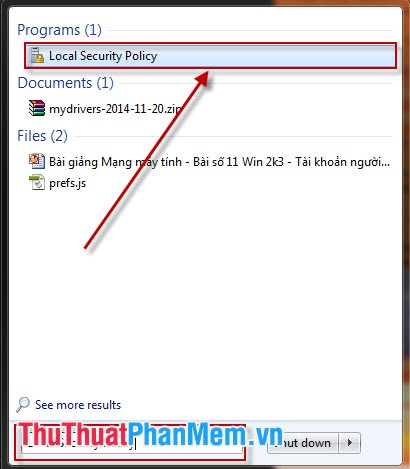
Local Security Policy window appears, click Account Policies on the left, then click Account Lockout Policy .

By default, when you enter wrong password, your account will be automatically locked immediately. To change this, double-click Account lockout threshold on the right side of the dialog box.

A new window appears and you can change the number of times you have entered the wrong password. Here I choose to allow the wrong password 3 times and then click OK to complete the changes.

Besides, Windows also allows you to choose the time to unlock temporary user accounts. You can change these settings at Account lockout duration and Reset account lockout counter .
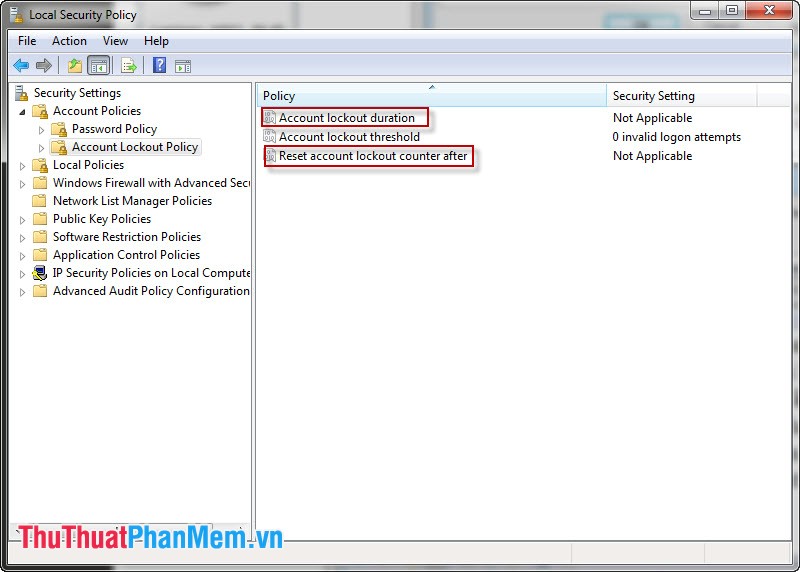
The default is after 30 minutes your computer will automatically open again, click OK to save your changes to the settings.
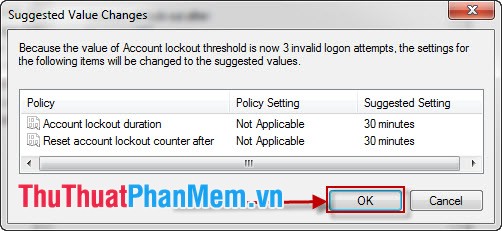
Now your computer will automatically lock in 30 minutes when you enter the wrong password 3 times.
2. Change the password setting in the Command Prompt.
To open Command Prompt, go to the Start menu, type Command Prompt in the search box, right-click Command Prompt, and select Run as administrator .
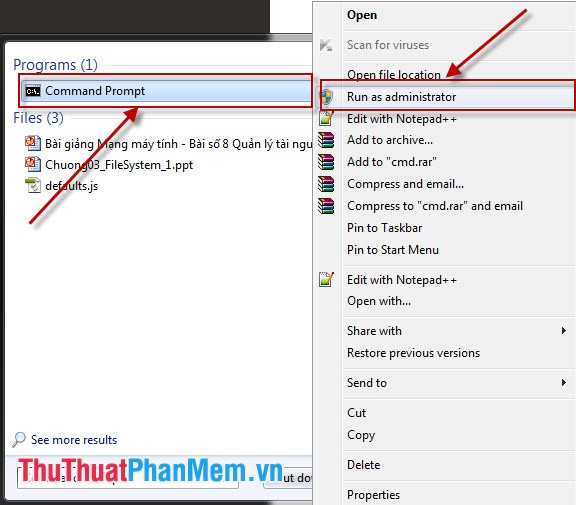
Or you can use the Windows key + R to type cmd in the Open section of the Run dialog box, and then click OK .
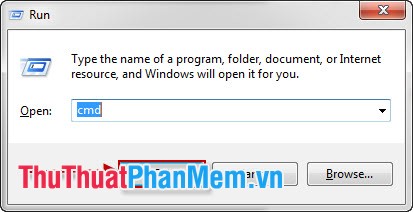
Then the dialog box opens, change the path to C: Windowssystem32 by cd . to return to the parent path, cd to add the child path to the parent path.
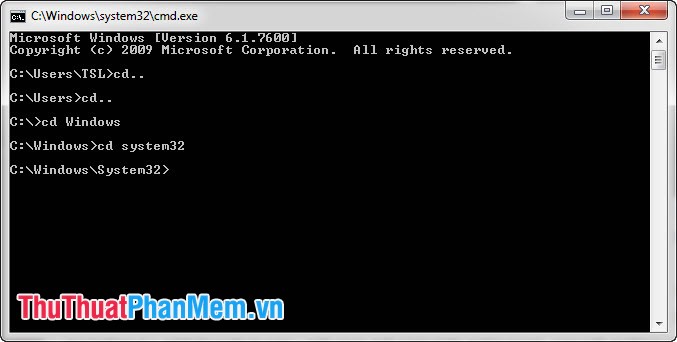
At the Command Prompt window enter net accounts command , the system will immediately list you for password-related settings. In that lockout threshold: Never means your computer will never be locked if the password is entered wrong n times.
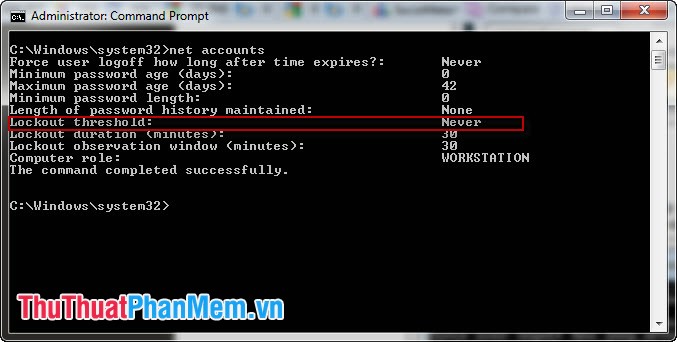
To adjust the number of times allowed to enter the wrong password is 3 times you enter the command line net accounts / lockoutthreshold: 3 and press Enter immediately the system will notify the successful setup.
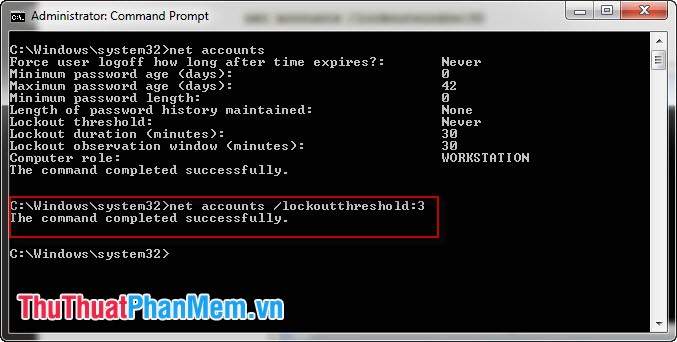
In addition, it also allows the computer to close and automatically reopen after 30 minutes when you enter the order in the order net accounts / lockoutduration: 30 and net accounts / lockoutwindow: 30 .
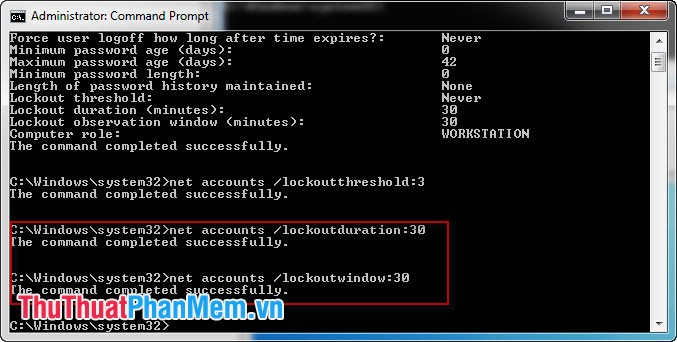
You can double check the settings by re-entering the net accounts command on the Command Prompt .
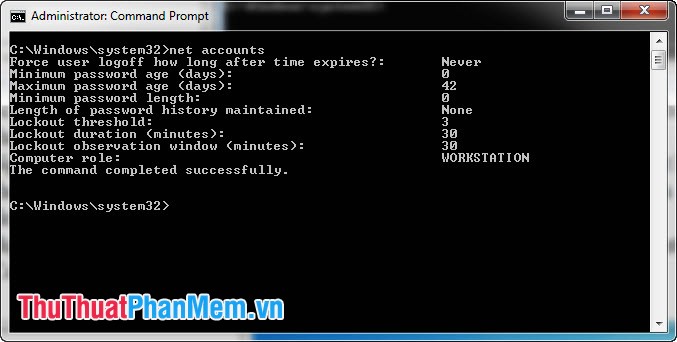
Here are the results when you use either of these two methods to set up.
- When you enter the wrong password:
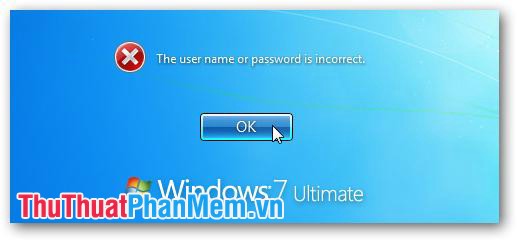
- Enter all times prescribed and locked: You wait until the system allows logging in again.
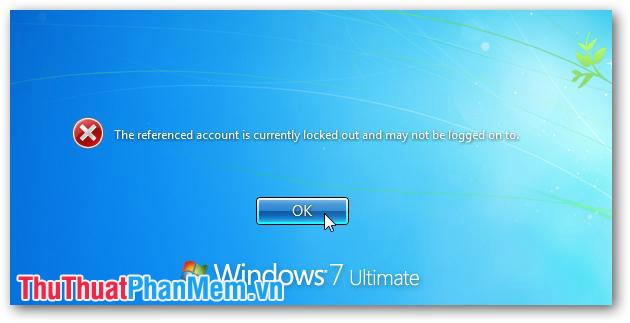
Note: The above two ways are only to prevent unauthorized access, not to prevent fraudsters using methods to break into.
You should read it
- How to automatically lock the computer screen Windows 10, Windows 7
- How to lock Windows PC after automatic login
- 4 ways to lock Windows 10 computers super fast
- 12 signs that your computer is hacked
- How to enable the auto-lock feature when users leave - Dynamic Lock on Windows 10
- How to automatically change the screen rotation lock on iPhone
- How to change the wallpaper of the desktop lock screen automatically
- Computers that are not connected to the internet can still be hacked
May be interested
- How to Turn Off Caps Lock
 this wikihow teaches you how to turn off caps lock, which causes you to type in all capital letters, on a windows or mac computer. turning off caps lock on a functional computer is as simple as pressing the 'caps lock' key again, but if...
this wikihow teaches you how to turn off caps lock, which causes you to type in all capital letters, on a windows or mac computer. turning off caps lock on a functional computer is as simple as pressing the 'caps lock' key again, but if... - How to automatically turn off music, screen lock on iPhone
 if you often listen to music on iphone, you can set the mode to automatically turn off music, screen lock on iphone.
if you often listen to music on iphone, you can set the mode to automatically turn off music, screen lock on iphone. - Signs show clearly that your system is being hacked
 if an email requests any sensitive information such as your address, bank account, social security number, or even the date of birth, chances are it's a fake email.
if an email requests any sensitive information such as your address, bank account, social security number, or even the date of birth, chances are it's a fake email. - Quick and simple ways to lock Windows 10, 8.1, 7, 11 computer screen
 there are many different ways to lock the computer screen that we can choose when we are not working or studying in front of the computer and do not want to turn off the computer. instead, just lock the screen and not let others know. use only.
there are many different ways to lock the computer screen that we can choose when we are not working or studying in front of the computer and do not want to turn off the computer. instead, just lock the screen and not let others know. use only. - How to turn Caps Lock keys into modifier keys on Mac
 many computer users find the caps lock key useless, they rarely or even not use it for a long time. this is how to make caps lock keys more useful on mac.
many computer users find the caps lock key useless, they rarely or even not use it for a long time. this is how to make caps lock keys more useful on mac. - Lock the computer with Smart PC Locker software
 you can press windows + l key combination to lock the computer quickly when there are busy not using the computer. but for high security, you should use smart pc locker pro software. the software helps you fast lock your computer, want to access the computer you need to enter
you can press windows + l key combination to lock the computer quickly when there are busy not using the computer. but for high security, you should use smart pc locker pro software. the software helps you fast lock your computer, want to access the computer you need to enter - Here's how to check if your TeamViewer account is hacked.
 if you are worried or suspect that your teamviewer account has been hacked, you can conduct a small investigation to confirm this again.
if you are worried or suspect that your teamviewer account has been hacked, you can conduct a small investigation to confirm this again. - How to change screen lock timeout in Windows 10
 if you feel your computer screen lock time is too fast or too long, causing you to frequently log in to your computer to use it, read this article to change the screen lock timeout for windows 10.
if you feel your computer screen lock time is too fast or too long, causing you to frequently log in to your computer to use it, read this article to change the screen lock timeout for windows 10. - Summary of how to lock Windows 11 PC
 due to work requirements, sometimes you have to turn on and use the computer all day. so when you have to take your eyes off the machine, what should you do to remain safe and secure without having to completely turn off the system? it's very simple, lock the phone!
due to work requirements, sometimes you have to turn on and use the computer all day. so when you have to take your eyes off the machine, what should you do to remain safe and secure without having to completely turn off the system? it's very simple, lock the phone! - 3 ways to lock your computer Windows 10 very fast
 3 ways to lock your computer windows 10 very fast. locking your computer is a simple, quick method to help us protect our computer from strangers when we need to leave the computer unexpectedly in a short time instead of having to turn off the computer completely.
3 ways to lock your computer windows 10 very fast. locking your computer is a simple, quick method to help us protect our computer from strangers when we need to leave the computer unexpectedly in a short time instead of having to turn off the computer completely.










 How to create a safe, secure password
How to create a safe, secure password How to convert MP4 to MP3 fast and most standard
How to convert MP4 to MP3 fast and most standard Collection of good soundtracks or free clips
Collection of good soundtracks or free clips How to insert text into Video simple, fast, most beautiful
How to insert text into Video simple, fast, most beautiful How to create videos from photos quickly and simply
How to create videos from photos quickly and simply How to merge music into videos quickly & professionally
How to merge music into videos quickly & professionally